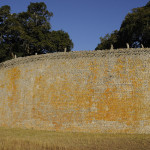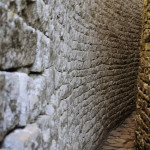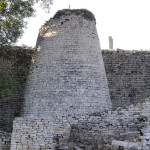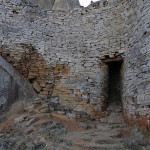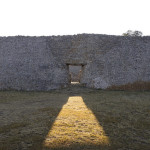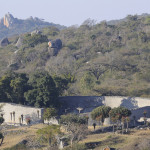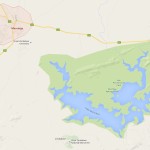Great Zimbabwe Pictures, History and Facts
Opening times: 9am to 5 pm
Costs: $10
Location: In Masvingo
Phone: 263 4 54367
Great Zimbabwe Ruins; Photos and some simple facts about the ancient city located in Masvingo Zimbabwe.
- an ancient stone city
- ..was a royal residence
- ..a religious site
- …built by locals
- built without cement
- …a trading site
Brief Definition & Background History: The Shona people called them Dzimbabwe or sacred houses. The construction was done with dry stones without the use of cement. There is no doubt that the construction of these free standing stone walls needed cunning workmanship to accomplish. It is sometimes refered in popular literature and documentaries as remnants of the ancient civilisations and lost cities. Great Zimbabwe has inspired writers and film makers in different ways. It is the inspiration behind Rider Haggard’s King Solomon’s Mines. It is also the force behind a best-seller – The Sunbird.
The Rise: Great Zimbabwe covers about 1800 acres of land with a dense maze of walls and stone towers. It is the largest ancient stone construction in sub Sahara Africa.The ruins are about 700 years old. The ruins are the capital of an empire where an influential king ruled people living in the vast Zimbabwe plateau.Great Zimbabwe Empire is a manifestation of a thriving Shona African civilisation that existed and flourished centuries before the colonisation of Zimbabwe. With over 20000 inhabitants, the area was the centre of trade between the Zimbabwe plateau people with foreign merchants from as far as China. The rulers decided to built the stone structures as their wealth and political power increased.
At its peak Great Zimbabwe served as the capital of a kingdom which was about 200 000 square miles. There were close to 200 smaller administrative centres, the ruins of which still continue to exist. They include the beautiful Khami Ruins found in Bulawayo. The wealth and economy of the empire depended on agriculture, mining and long distance trade with the Far East.
Decline: Mass migrations, political problems, economic crises, droughts and famine led to the fall of the Great Zimbabwe Empire.
Destruction of site: Early European settlers and fortune seekers ravaged the place in search of buried treasure in the 19th century. For many years the site has been subjected to physical destruction by a number of people whose speculations almost destroyed one of the most important symbols of past and present day Zimbabwe. Great Zimbabwe Ruins’ treasured soapstone birds were among items taken and damaged by treasure hunters. A UNESCO world heritage site since 1986, Great Zimbabwe is regarded as a symbol of ancient African prosperity and civilisation many years before European settlements were established.
pictures by a ashton
Origins & Controversies
More Information
Main Highlights
The Great Enclosure is made up of a high wall with a perimeter of smaller walls surrounding it. There are suggestions that this could have been the official residence of the royal families. The walls of the Great Enclosure are about 11 metres high ( about 36,1 feet). It stretches to 250 metres (about820 feet). The walls are 6 metres (20 feet) thick. The Valley Complex is in two forms the lower and upper valley areas. It is believed these valleys were occupied at different periods by different kings. There are other reports that suggest that the valley complex was used as residence by commoners. The Hill Complex is believed to have been used for ceremonial functions and gatherings. Many writers say that the Zimbabwe birds were kept in the Hill Complex.
Great Zimbabwe Birds
Designed out of soapstone sculpture, Zimbabwe birds are among the most notable items recovered from Great Zimbabwe. In total there are 8 stone caved birds taken out of the Ruins. The birds are on average about 50cm tall. Today the Zimbabwe bird flies on the national flag. It has been used on many places as a symbol of the country. The birds are widely believed to be fish eagles that are very common in Zimbabwe.
Great Zimbabwe Artefacts
There were a number of highly valuable artefacts that were found at Great Zimbabwe. These include some stone carvings, African pottery, iron gongs, elaborately deigned ivory pieces, bronze and gold ornaments, crucibles and sheaths. A number of Great Zimbabwe artefacts are displayed at the national museum in Harare. Great Zimbabwe pottery can be seen at Bulawayo museum.
Zimbabwe’s Other Ancient Ruins
Zimbabwe is a land of stone ruins and here is a list of names of some of Zimbabwe’s stone ruins. • Great Zimbabwe • Bideford Ruins • Chawomera Ruins • Chiswingo Ruins • Danangombe Ruins • Harleigh Ruins • Kasekete Ruins • Khami RuinsRuins • Lundi Ruins • Mapela Ruins • Mount Fura Ruins in Mount Darwin • Mtelegwa Ruins • Mtoko Tere Ruins • Naletale Ruins • Nhunguza Ruins • Njanja Ruins • Nyahokwe Ruins • Nyangwe Fort Ruins • Tsindi Ruins • Ziwa Ruins Access For tourists, Great Zimbabwe is very close to the town of Masvingo. Here visitors can find budget and cheap bed and breakfast, motels, hotels, lodges, overnight accommodation and backpackers.

